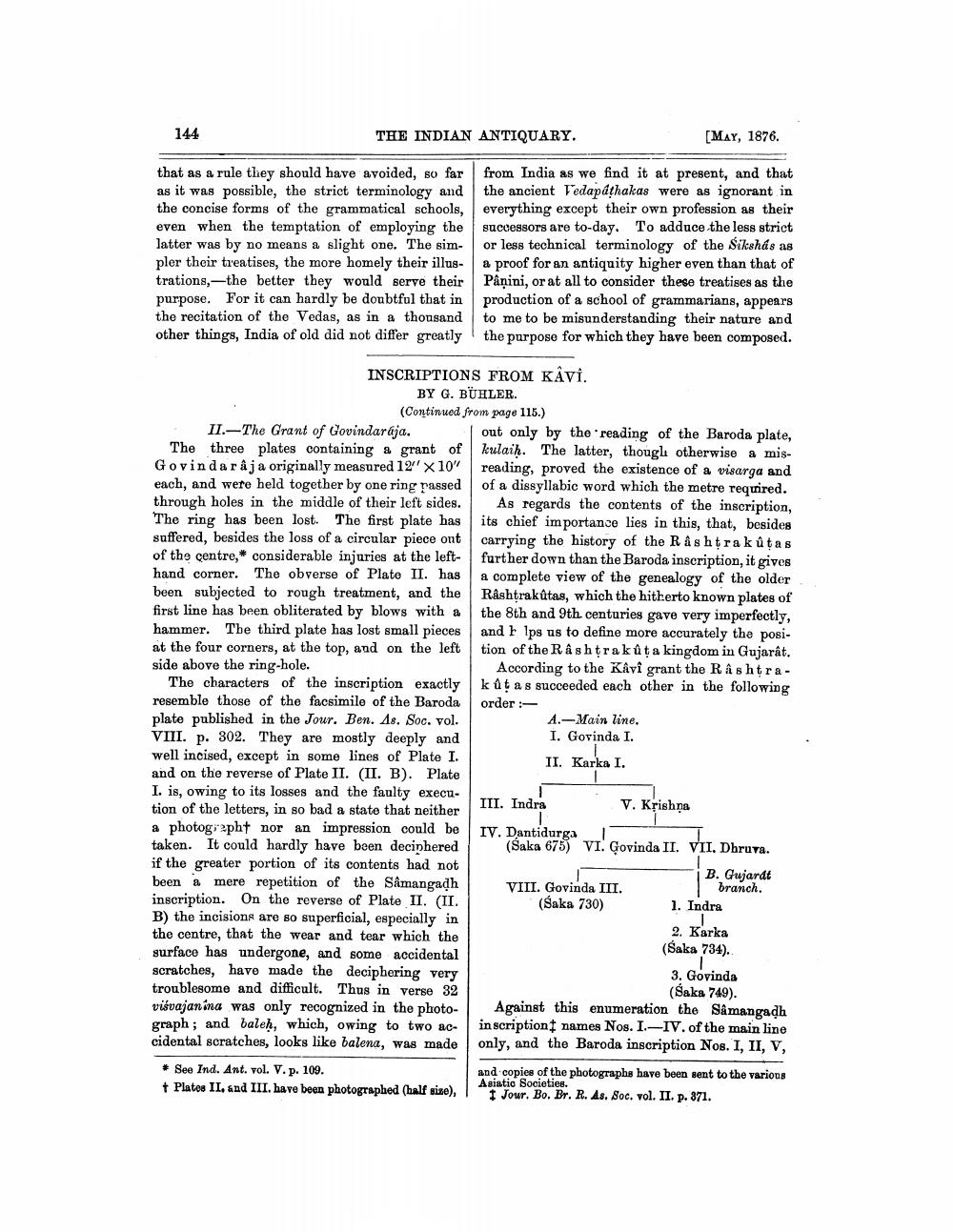________________
144
THE INDIAN ANTIQUARY.
[MAY, 1876.
that as a rule they should have avoided, so far as it was possible, the strict terminology and the concise forms of the grammatical schools, even when the temptation of employing the latter was by no means a slight one. The simpler their treatises, the more homely their illustrations,-the better they would serve their purpose. For it can hardly be doubtful that in the recitation of the Vedas, as in a thousand other things, India of old did not differ greatly
from India as we find it at present, and that the ancient Vedapáthakas were as ignorant in everything except their own profession as their successors are to-day. To adduce the less strict or less technical terminology of the Sikshas as a proof for an antiquity higher even than that of Pånini, or at all to consider these treatises as the production of a school of grammarians, appears to me to be misunderstanding their nature and the purpose for which they have been composed.
INSCRIPTIONS FROM KÂvi.
BY G. BUHLER.
(Continued from page 115.) II.-The Grant of Govindarája. out only by the reading of the Baroda plate, The three plates containing a grant of kulaih. The latter, thouglı otherwise a misGovindar aja originally measured 12' X 10' reading, proved the existence of a visarga and each, and were held together by one ring rassed of a dissyllabic word which the metre required. through holes in the middle of their left sides. As regards the contents of the inscription, The ring has been lost. The first plate has its chief importance lies in this, that, besides suffered, besides the loss of a circular piece ont carrying the history of the Rashtra k û tas of the centre, considerable injuries at the left- further down than the Baroda inscription, it gives hand corner. The obverse of Plate II. has a complete view of the genealogy of the older been subjected to rough treatment, and the Rashtrakūtas, which the hitherto known plates of first line has been obliterated by blows with a the 8th and 9th centuries gave very imperfectly, hammer. The third plate has lost small pieces and I lps us to define more accurately the posiat the four corners, at the top, and on the left tion of the Rashtrakût a kingdom in Gujarât. side above the ring-hole.
According to the Kåvi grant the RashtraThe characters of the inscription exactly kút as succeeded each other in the following resemble those of the facsimile of the Baroda order :plate published in the Jour. Ben. As. Soc. vol.
4.-Main line. VIII. p. 302. They are mostly deeply and
I. Govinda I. well incised, except in some lines of Plate I.
II. Karka I. and on the reverse of Plate II. (II. B). Plate I. is, owing to its losses and the faulty execution of the letters, in so bad a state that neither a photographt nor an impression could be
IV. Dantidurga taken. It could hardly have been deciphered (Saka 675) VI. Govinda II. VII. Dhruva. if the greater portion of its contents had not
B. Gujarat been a mere repetition of the Samangadh
VIII. Govinda III.
branch. inscription. On the reverse of Plate II. (II.
(Saka 730)
1. Indra B) the incisions are so superficial, especially in the centre, that the wear and tear which the
2. Karka
(Saka 734). surface has undergone, and some accidental scratches, have made the deciphering very
3. Govinda troublesome and difficult. Thus in verse 32
(Saka 749). visvajanina was only recognized in the photo- Against this enumeration the Samangadh graph ; and baleh, which, owing to two ac- inscription I names Nos. I.-IV. of the main line cidental scratches, looks like balena, was made only, and the Baroda inscription Nos. I, II, V, • See Ind. Ant. vol. V. p. 109.
and copies of the photographs have been sent to the various + Platos II and III. have been photographed (half size),
Asiatic Societies.
1 Jour. Bo. Br. R. As. Soc. vol. II. p. 371.
III. Indre
V. Krishpa




